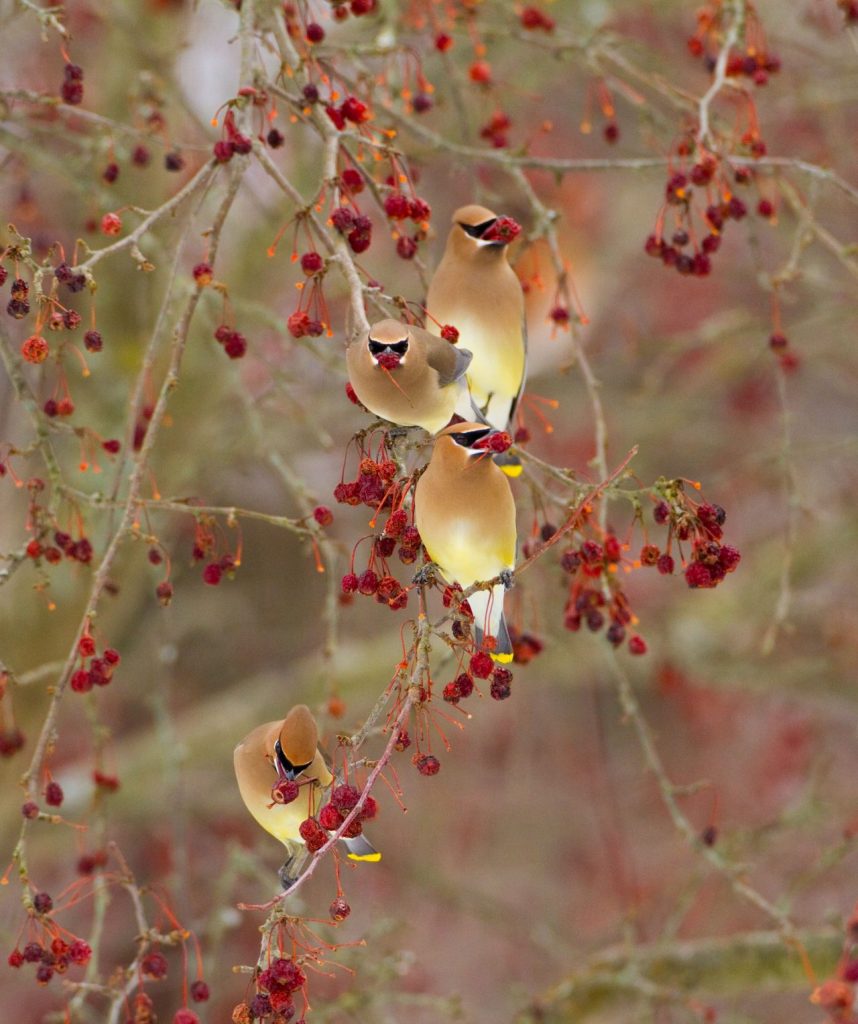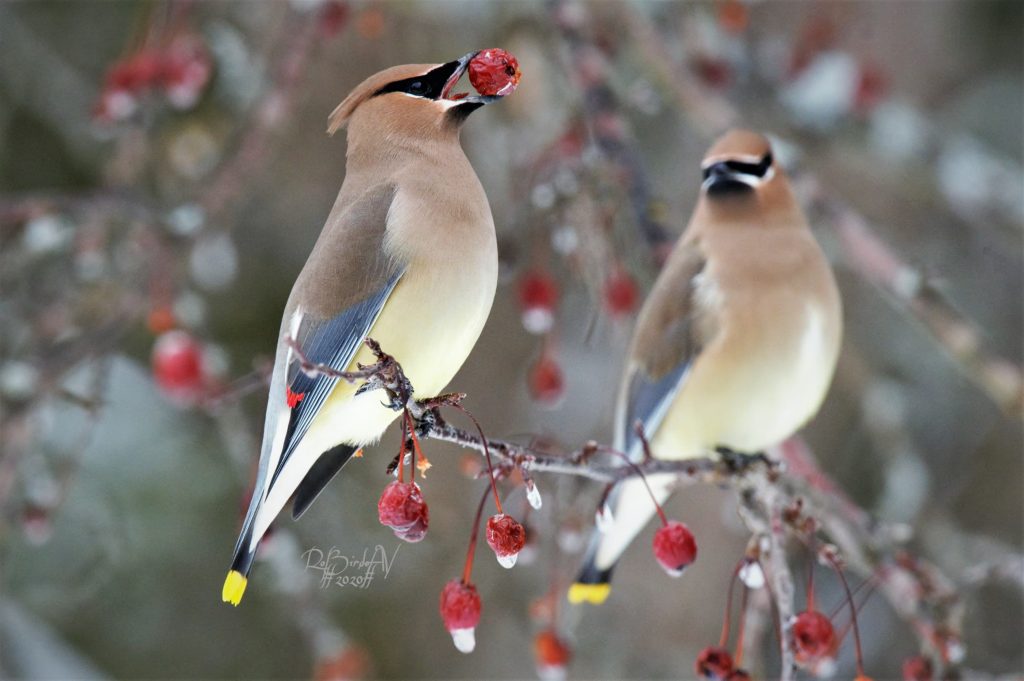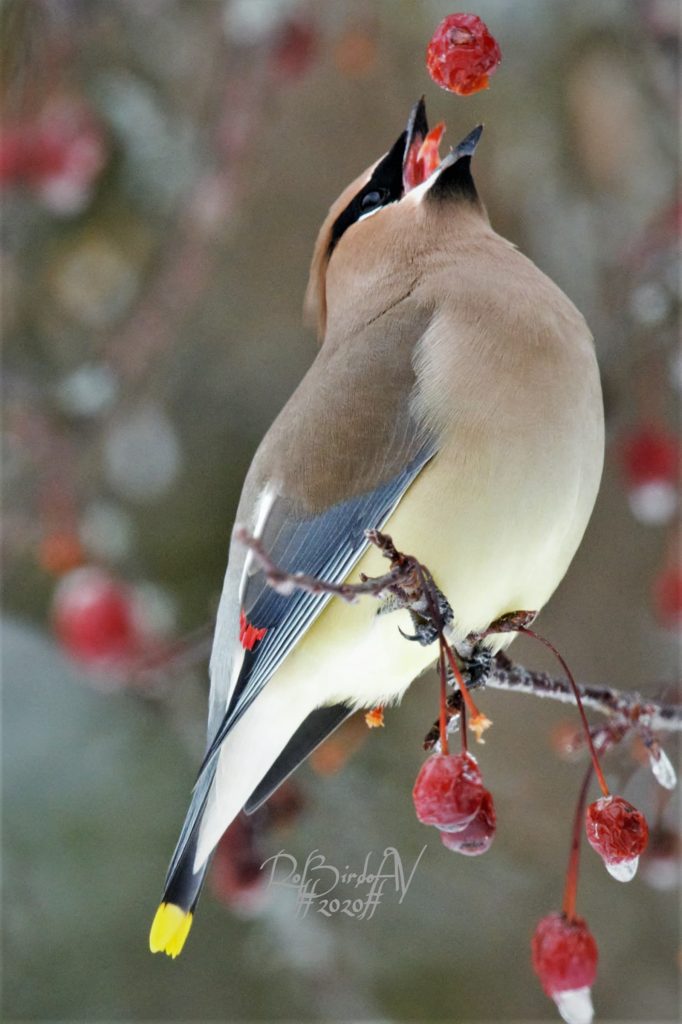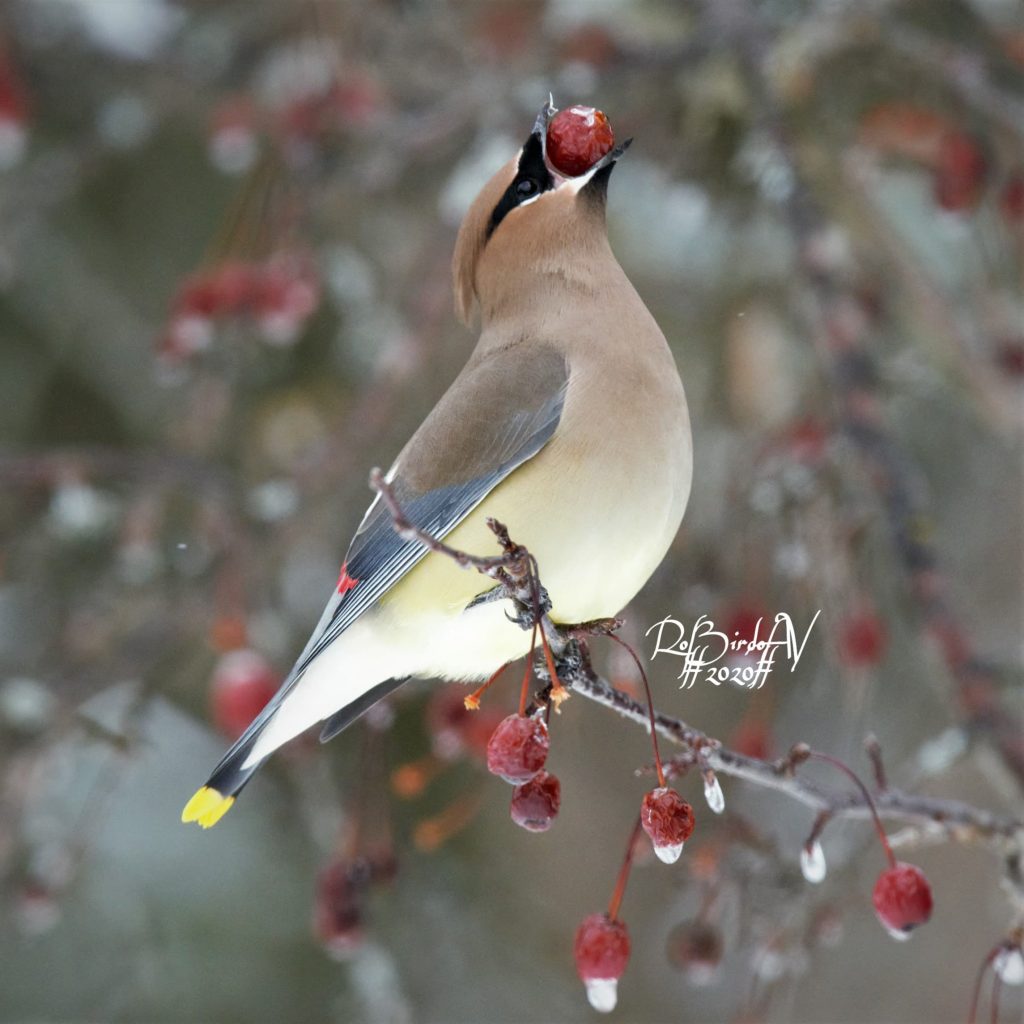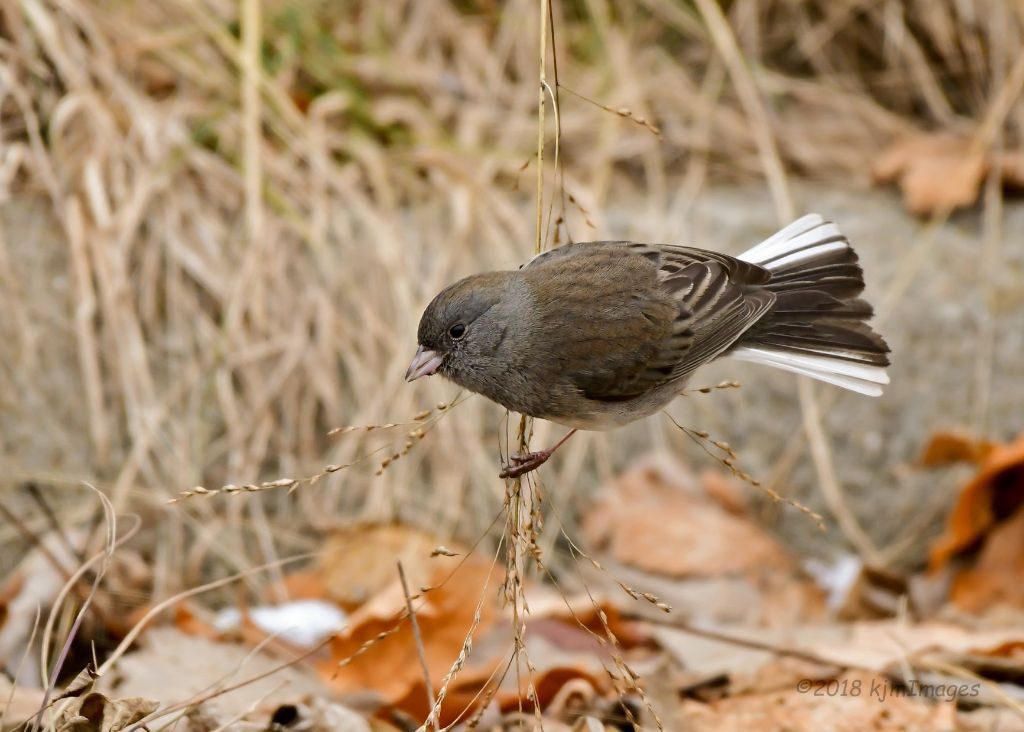
Squirrels: An Introduction
Soft, fluffy and entertaining – the definition of a squirrel. In our area we have both Fox Squirrels and Gray Squirrels. You may also see black squirrels, color variants of Gray Squirrels. Both species mate December through February. You may have noticed “chasing”, which is part of the mating ritual. Females give birth to naked, helpless young about 45 days after mating. They nurse the young until about three months of age. They will also mate again in May to June. Males do not help with the raising of the young. Squirrels build nests of twigs and leaves about 35 to 40 feet up, often in the sturdy crotch of a tree.
Food: Dining, Stashing, Chewing
Squirrels are omnivores and will eat all types of seeds including acorns, hickory, walnut, mulberry and hawthorn seeds. They will also consume bird eggs, birds, insects, arthropods and carrion.
Squirrels gather and stash seeds, an important job in the ecosystem. Some of the seeds are never refound, instead sprouting into new trees. These small mammals also serve as a food source for Red-tailed Hawks, Coopers Hawks, owls, coyotes and fox.
Another amazing aspect of squirrels is their teeth. They grow continuously and are very effective at chewing, as those of us who have them around well know.
Other Fun Facts
Those who feed the birds know of the squirrels’ leaping abilities. They can leap ten feet from a solid object such as the side of a tree as well as any man-made structure. It seems as if the only surface that they are unable to climb is glass.
Here is your word of the day – vibrissae. These thick hairs (whiskers) are found on the chin, nose, above and below the eyes, and forearms of squirrels. Squirrels rely on these hairs to enhance their sense of touch.
The Flip Side of Appreciation
However, many people are quick to exclaim about “those darned squirrels!” Who cannot relate to the success of squirrels at our bird feeders? Getting into the feeders is their full-time occupation and they are relentless in their efforts. Looking to keep them out of your feeders? We have answers for you at Wild Birds Unlimited in Grosse Pointe Woods!
Deterrents: Feeders
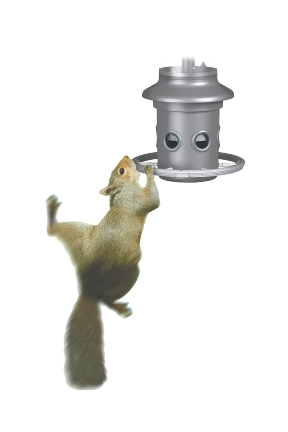
There are some very effective squirrel resistant feeders including the Eliminator. This feeder has a perch that closes with the weight of a squirrel. The length of the feeder prevents the squirrel from hanging from the top of the feeder or reaching the seed ports below.
Baffles
Placement of feeders that do not have a weight device is important if you do not intend to feed the squirrels. If using a pole system, there are steel baffles that are too wide for their paws to get a sufficient grip and too long for them to over reach the baffle. This type of baffle needs to have its top at five feet off of the ground with all feeders hanging so that the bottom of the feeders are above that five foot position. We do not recommend plastic baffles, as squirrels can easily chew through this material. This type of baffled pole system is only effective if placed ten feet from any object the squirrel can jump from. This includes trees, patio furniture, pots, grills and other feeding setups. When using a baffle above a feeder, the baffle needs to be quite wide or shaped to create a slide assisting the squirrels’ exit. Both types of baffles are carried at WBU GPW.
Seeds
Safflower seed used alone is another effective remedy against feeding squirrels as most do not prefer its’ taste. Hot pepper treated seed is also a good deterrent.
Whether you watch them and have names for the ones in your yard or are among those that wave your fist as you exclaim “Those Darned Squirrels”, let’s commend them on Squirrel Appreciation Day.

